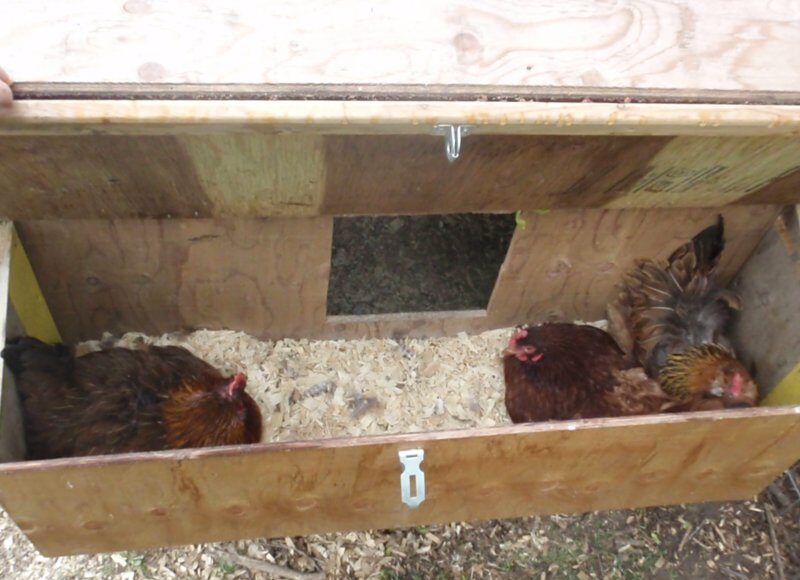Community nesting box design is an art and science that caters to the needs of your chickens, ensuring they have a comfortable and functional place to lay their eggs. As a chicken lover, understanding the nuances of nesting box designs can significantly enhance your poultry keeping experience. In this article, we will delve into the essentials of creating an ideal nesting environment for your feathered friends, ensuring their health and productivity.

Understanding the Basics of Nesting Boxes
Nesting boxes are essential components of a chicken coop, providing hens with a dedicated space to lay their eggs. The design and placement of these boxes can greatly influence the behavior and wellbeing of your flock. It’s crucial to consider factors like size, materials, and location to create an optimal community nesting box design.
Why Size Matters
The size of a nesting box can affect the comfort and accessibility for hens. Ideally, each box should accommodate a single hen, measuring about 12x12x12 inches. This space allows hens to enter and exit comfortably while ensuring they feel secure.
Material Choices for Durability
Choosing the right materials for your nesting boxes is vital for durability and hygiene. Wood is a popular choice due to its natural insulation properties, but plastic and metal are also viable options. Each material has its pros and cons, so it’s important to select one that fits your specific needs and climate.
Placement and Accessibility
The location of the nesting boxes within the chicken coop can influence how often hens use them. Placing boxes in a quiet, dimly lit area can encourage hens to lay eggs in them rather than on the ground. Ensure easy access for both the hens and yourself for egg collection.
Designing for Community Use
While individual nesting boxes are common, community nesting box designs cater to multiple hens at once. These designs can be more efficient in terms of space and materials, especially for larger flocks.
Benefits of Community Nesting Boxes
Community boxes provide several advantages, including reduced material costs and space-saving designs. They also mimic natural nesting behavior, where multiple hens share a nesting area. This communal aspect can lead to increased egg production and happier hens.
Design Considerations
When designing community nesting boxes, consider the number of hens and available space. Ensure there is enough room for multiple hens to lay simultaneously without crowding. The boxes should be easily accessible and easy to clean to maintain hygiene.
Enhancing Comfort and Safety
Beyond the basic structure, adding elements to enhance comfort and safety can improve the functionality of nesting boxes.
Bedding and Insulation
Providing soft bedding, like straw or wood shavings, can make nesting boxes more inviting. Bedding not only adds comfort but also helps insulate the boxes, keeping them warm in winter and cool in summer.
Security Features
Security is another critical aspect of community nesting box design. Ensure the boxes are predator-proof by using sturdy materials and secure construction. Adding a door or flap can provide additional protection from potential threats.
Maintaining Your Nesting Boxes
Regular maintenance is key to ensuring the longevity and effectiveness of your nesting boxes. Regular cleaning prevents the buildup of waste and parasites, which can affect the health of your flock.
Cleaning and Sanitation
Regularly remove soiled bedding and replace it with fresh materials. Disinfect the boxes periodically to eliminate bacteria and pests. This practice helps maintain a healthy environment for your hens.
Repairs and Upkeep
Inspect your nesting boxes for any signs of wear or damage. Prompt repairs ensure the boxes remain safe and functional. Regular upkeep prolongs the life of the boxes and keeps your hens safe and comfortable.

FAQs on Community Nesting Box Design
How many nesting boxes do I need?
Generally, one nesting box per 4-5 hens is sufficient. However, for community nesting boxes, ensure there is ample space to accommodate multiple hens simultaneously.
What materials are best for nesting boxes?
Wood, plastic, and metal are common materials. Wood offers natural insulation, while plastic and metal are easy to clean. Choose based on your climate and personal preference.
How do I encourage hens to use nesting boxes?
Place boxes in a quiet, dimly lit area and add soft bedding. Ensure boxes are clean and accessible. You can also use dummy eggs to attract hens to the boxes.
For more information on hen laying signs, DIY nesting boxes, and nesting behavior, explore these helpful resources.
This article contains affiliate links. We may earn a commission at no extra cost to you.











